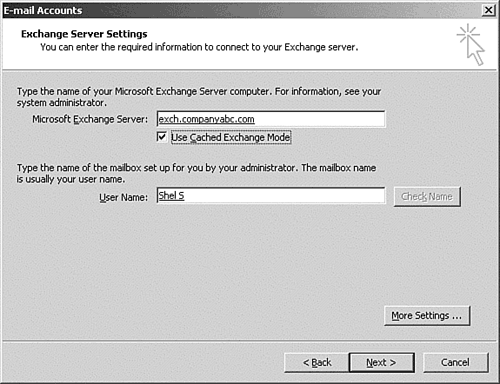Examining Exchange Server 2003 Performance Improvements
| < Day Day Up > |
| Before delving into ways to tweak Exchange Server 2003 performance, it is important to have an understanding of the performance improvements that have been made since its predecessor, Exchange 2000. Although some of these performance improvements are more noticeable than others, Exchange Server 2003 has proven its ability to scale into the enterprise and beyond. Communication ImprovementsExchange Server 2003 includes major improvements in the way it handles client/server communications. These improvements entail changes made to communication links between sites, servers, and users. Implemented changes translate into a fundamentally different approach toward how Exchange Server 2003 handles routing of messages from site to site as well as to and from the client computer. Improvements in Link State ConnectionsIn order to determine the best possible route to send a message between servers, Exchange uses link state routing technology. The best route is chosen based on the status and the cost of the connections. While routing messages between servers and sites, no alternate paths might be available to Exchange Server 2003 servers, or the existing connectors might be intermittently available. By determining whether there are alternate and available connections, Exchange Server 2003 significantly reduces the amount of traffic between servers. Another performance improvement with Exchange Server 2003 analyzing links between servers is how it efficiently propagates link status information to other servers in and between sites. If no alternate paths are detected for a message to take, the available route is marked as always in service. Exchange will never change this state back to an out-of-service state unless an alternate path becomes available. As a result, propagation of link state information in and between sites is reduced, and consequently overall network traffic is optimized. Synchronization and Replication EnhancementsSynchronization and replication enhancements available in Exchange Server 2003 can be analyzed from various viewpoints. Generally speaking, these enhancements include changes made to the Outlook client, Outlook Web Access client, and public folders. Client-side Performance EnhancementsAmong the new performance-enhancing features of Exchange Server 2003 and Outlook 2003 is the ability to collect client-side data by recording RPC errors that occur on the client. This information is then reported in the Event Viewer. Outlook 2003 Client SynchronizationSignificant reduction of Remote Procedure Calls (RPCs) to the Exchange Server from the Outlook 2003 client has resulted in noticeable improvements in client performance even in low-bandwidth conditions. This improvement was primarily made available through the employment of the following features:
Outlook Web Access (OWA) Performance EnhancementsAn abundance of new features are available in OWA, and the biggest one by far is the interface. However, the following primary features contribute to performance enhancements:
Improved Public Folder Store ReplicationPublic folder store replication has greatly improved in respect to the way Exchange Server 2003 handles the receipt of updates from various other servers. In Exchange 2000 Server, a server holding the largest number of needed updates would always be chosen regardless of its transport cost. When determining update status during the replication process, Exchange Server 2003 takes the following three main elements into account on a priority basis and calculates the replication algorithm based on the data gathered from these questions:
This architecture enables reduction of replication traffic over slower links because lower-cost servers (servers in the same site) always take precedence over higher-cost servers (those located in remote sites). Performance Scalability ImprovementsSome of the Exchange Server 2003 enhancements to performance and scalability are
|
| < Day Day Up > |
EAN: 2147483647
Pages: 393
